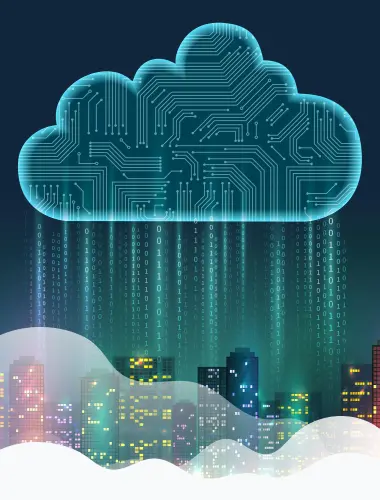Blogs
The Digital Triangle for Edge Interconnection
Digital is reshaping how business is done. We are at the cusp of a completely new age in global economics, with enterprises, regardless of size and heritage, redefining their activities and their sectors based on digitalization. Organizations are leveraging their digital strength to reshape their own business models and how business is done within and across entire sectors, including automotive/mobility, healthcare, finance, and media.
As they become digital, organizations are needing a new interconnection service regime customized for their needs. New and transformative technologies, like IoT, artificial intelligence, and 5G, are accelerating the pace of change in markets around the globe. These disruptive elements will serve as a “digital interconnection triangle” of future innovation, in turn creating still further interconnection needs at the edge.
The heart, hand, and brain of future innovation
Interconnection at the edge requires a new way of handling data streams, and a new way of interconnecting players within an ecosystem. The key factors that influence edge interconnection (if you will, the heart, the hand, and the brain of future innovation) are:
5G (the heart):
5G enables the management of a lot of different frequencies, and also enables the transmission of multiple data streams. Designed primarily for maintaining data from a huge number of sensors, 5G represents the foundation for the future evolution of the Internet of Things.
IoT (the hand):
IoT represents function in the digital interconnection triangle. In a 5G-enabled environment, it will be possible to connect an enormous number of devices within a physically limited space. This will open the way to digitalizing more and more currently purely mechanical processes. But managing the enormous number of sensors and data streams that will result in the Internet of Things in the future will not be possible without the support of artificial intelligence.
AI (the brain):
AI is essential in this mix in order to create the logic management and maintenance of data streams for innovative use cases and the respective ecosystem involved in the specific environment. This is the only way that the interconnection of millions of sensors in the Internet of Things can be managed efficiently. The solution is intelligently managed software-defined edge interconnection.
Each of these factors is dependent on the other two, and it is only when they are interconnected that they can drive digital evolution. The whole is greater than the sum of the parts.
Unlocking new use cases with edge interconnection
Use cases that reflect this digital interconnection triangle will be many and various, but current scenarios include connected cars and autonomous vehicles on the one hand, and Agriculture 4.0 on the other. In both of these use cases, there is the need for widescale deployment of 5G masts, including edge computing capabilities (edge data centers), and the associated fiber connectivity to local data centers and regional cloud solutions. For these use cases, IoT devices and sensors are needed both within the landscape (in the road and in the soil to measure physical conditions) and on the mobile objects (throughout cars – the car itself can be considered as a mobile edge data center – and on autonomous farm machinery or watering/fertilization systems, for example).
From this point, the masses of data that are generated by the given use case need to be intelligently sorted into, among other things: data that needs to be processed locally with extremely low latency to enable rapid response times; data that can be sent to the cloud for processing if the response times are less critical; data that needs to be accessed by specific actors (but not others) in the value chain: and data that will be stored long-term versus data that will be discarded. The list goes on…
The complexity of this demands intelligent management of the data streams
Edge interconnection – the next generation interconnection
DE-CIX is working on developing a solution based on consideration of this triangle. Software-defined Internet Exchanges may well be one of the solutions not only to serve these needs efficiently and fast, but also to enable fast and cost-efficient expansion of the interconnection industry with less dependency on hardware. SD will also both bring more dynamism and encourage greater productivity.
IoT is the edge, AI is in the edge, and 5G serves the edge: The software-defined exchange provides the solution to the forthcoming digitalization challenge – namely, the ability to operate and manage the data streams of the future.
– by Ivo A. Ivanov, CEO, DE-CIX International
Subscribe to Newsletter
